Solaris (Russian: ???????, tr. Solyaris) is a 1972 Soviet science fiction film based on Stanis?aw Lem's novel of the same name published in 1961. The film was co-written and directed by Andrei Tarkovsky. The film is a meditative psychological drama occurring mostly aboard a space station orbiting the fictional planet Solaris. The scientific mission has stalled because the skeleton crew of three scientists have fallen into separate emotional crises. Psychologist Kris Kelvin travels to the Solaris space station to evaluate the situation only to encounter the same mysterious phenomena as the others.
| Solaris | |
|---|---|
Soviet film poster | |
| Directed by | Andrei Tarkovsky |
| Produced by | Viacheslav Tarasov |
| Written by |
|
| Based on | Solaris by Stanis?aw Lem |
| Starring |
|
| Music by | Eduard Artemyev |
| Cinematography | Vadim Yusov |
| Edited by | Lyudmila Feiginova |
| Distributed by | Mosfilm |
Release date |
|
Running time | 166 minutes |
| Country | Soviet Union |
| Language |
|
| Budget | SUR 1,000,000 (about $829,000 in 1972 USD) |
In loyalty to the novel's complex and slow-paced narrative, Tarkovsky wanted to bring a new emotional and intellectual depth to the genre, viewing most of western science fiction as shallow. The ideas which Tarkovsky tried to express in this film are further developed in Stalker (1979).
The critically successful Solaris features Natalya Bondarchuk (Hari), Donatas Banionis (Kris Kelvin), Jüri Järvet (Dr. Snaut), Vladislav Dvorzhetsky (Henri Berton), Nikolai Grinko (Kris Kelvin's Father), Olga Barnet (Kris Kelvin's Mother), Anatoli Solonitsyn (Dr. Sartorius), and Sos Sargsyan (Dr. Gibarian); the music is by Johann Sebastian Bach and Eduard Artemyev. At the 1972 Cannes Film Festival, it won the Grand Prix Spécial du Jury, the FIPRESCI prize and was nominated for the Palme d'Or. The film is often cited as one of the greatest science fiction films in the history of cinema.
Screenplay
Psychologist Kris Kelvin (Donatas Banionis) is being sent on an interstellar journey to evaluate whether a decades-old space station should continue to study the oceanic planet Solaris. He spends his last day on Earth with his elderly father (Nikolai Grinko) and retired pilot Berton (Vladislav Dvorzhetsky). Years earlier, Berton had been part of an exploratory team at Solaris but was recalled when he described seeing a four-meter-tall child on the surface of the water. This was dismissed as a hallucination by a panel of scientists, but now that the remaining crew members are making similarly strange reports, Kris's skills are needed.
Upon his arrival at Solaris Station, a scientific research station, none of the three remaining scientists bother to greet Kelvin, and he finds the space station in dangerous disarray. He soon learns that his friend among the scientists, Dr. Gibarian (Sos Sargsyan), has killed himself. The two surviving crewmen—Snaut and Sartorius (Anatoli Solonitsyn)—are uncooperative and evasive. Kelvin catches fleeting glimpses of others aboard the station, who were not part of the original crew. He also finds that Gibarian left him a rambling, cryptic farewell video message, warning him about the station.
After a fitful sleep, Kelvin is shocked to find Hari (Natalya Bondarchuk), his late wife, in his sleeping quarters. She is unaware of how she got there. Terrified by her presence, Kelvin launches the replica of his wife into outer space. Snaut explains that the "visitors" began appearing after the scientists conducted illegal nuclear experiments in a desperate attempt to understand the planet's nature.
That evening, Hari reappears in his quarters. This time Kelvin calmly accepts her and they fall asleep together in an embrace. Hari panics when Kelvin briefly leaves her alone in the room, and injures herself. But before Kelvin can give first aid, her injuries spontaneously heal before his eyes. Sartorius and Snaut explain to Kelvin that Solaris created Hari from his memories of her. The Hari present among them, though not human, thinks and feels as though she were. Sartorius theorizes that the visitors are composed of "neutrino systems" but that it might still be possible to destroy them through use of a device known as "the annihilator". Later, Snaut proposes beaming Kelvin's brainwave patterns at Solaris in hopes that it will understand them and stop the disturbing apparitions.
In time, Hari becomes independent and is able to exist away from Kelvin's presence. She learns from Sartorius that the original Hari had committed suicide ten years earlier. Sartorius, Snaut, Kelvin and Hari gather together for a birthday party, which evolves into a philosophical argument, during which Sartorius reminds Hari that she is not real. Distressed, Hari kills herself again by drinking liquid oxygen, only to painfully resurrect after a few minutes. On the surface of Solaris, the ocean begins to swirl faster into a funnel.
Kelvin becomes ill and goes to sleep. He dreams of his mother as a young woman, tending to wounds on his body that spontaneously heal. When he awakens, Hari is gone; Snaut reads her farewell note, in which she describes how she petitioned the two scientists to destroy her. Snaut then tells Kelvin that since they broadcast Kelvin's brainwaves into Solaris, the visitors had stopped appearing and islands began forming on the planet surface. Kelvin debates whether or not to return to Earth or to remain with Solaris.
Kelvin meets with his father at their country home. It is later revealed to be on an island in the Solaris ocean.
Writing
In 1968, the director Andrei Tarkovsky had two motives for cinematically adapting the Polish science fiction novel Solaris (1961) by Stanis?aw Lem: firstly, he admired Lem's work. Secondly, he needed work and money, because his previous film, Andrei Rublev (1966), had gone unreleased, and his screenplay, A White, White Day, had been rejected (even though in 1975 it would be realised as The Mirror). A film of a novel by Stanis?aw Lem, a popular and critically respected writer in the USSR, was a logical commercial and artistic choice. Tarkovsky and Lem collaborated and remained in communication about the cinematic adaptation of the novel Solaris. With Fridrikh Gorenshtein, Tarkovsky co-wrote the first screenplay in the summer of 1969; two-thirds of it occurred on Earth. The Mosfilm committee disliked it and Lem got furious over this unacceptably drastic alteration of his novel. The final screenplay yielded the shooting script which has less action on Earth, and Kelvin's marriage to his second wife, Maria, was deleted from the story.
In the literary Solaris, Lem describes science's inadequacy in allowing humans to communicate with an alien life form, because certain forms, at least, of sentient extra-terrestrial life may operate well outside of human experience and understanding. In the cinematic Solaris, Tarkovsky concentrates upon Kelvin's feelings for his wife, Hari, and the impact of outer space exploration upon the human condition. Dr. Gibarian's monologue is the highlight of the final library scene, wherein Snaut says, "We don't need other worlds. We need mirrors". Unlike the novel, which begins with psychologist Kris Kelvin's spaceflight, and occurs entirely on Solaris, the film shows Kelvin's visit to his parents' house in the country before leaving Earth for Solaris. The contrast establishes the worlds in which he lives – a vibrantly living Earth versus an austere, closed-in space station orbiting the planet Solaris – demonstrating and questioning space exploration's impact upon the human psyche.
The set design of Solaris features paintings by the Old Masters. The interior of the space station is decorated with full reproductions of the 1565 painting cycle of The Months (The Hunters in the Snow, The Gloomy Day, The Hay Harvest, The Harvesters, and The Return of the Herd), by Pieter Brueghel the Elder, and details of Landscape with the Fall of Icarus and The Hunters in the Snow (1565). The scene of Kelvin kneeling before his father and the father embracing him alludes to The Return of the Prodigal Son (1669), by Rembrandt. The references and allusions are Tarkovsky's efforts to give the young art of cinema a historic perspective of centuries, to evoke the viewer's feeling that cinema is a mature art.
The film references Tarkovsky's earlier 1966 film Andrei Rublev by having an icon by Andrei Rublev being placed in Kelvin's room. It thus forms the second part, together with Tarkovsky's next film The Mirror which was made in 1975 and which references Andrei Rublev by having a poster of the film being hanged on a wall, in a series of three films by Tarkovsky referencing Andrei Rublev.
The cast
Initially, Tarkovsky wanted his ex-wife, Irma Raush, as Hari. After meeting Swedish actress Bibi Andersson in June 1970, however, he decided that she was a better actress for the role. Wishing to work with Tarkovsky, Andersson accepted her salary in rubles. Nevertheless, Natalya Bondarchuk was ultimately cast as Hari. Tarkovsky had met her when they were students at the State Institute of Cinematography. It was she who had introduced the novel Solaris to him. Tarkovsky auditioned her in 1970 but decided she was too young for the part. He instead recommended her to director Larisa Shepitko who cast her in You and I. Half-a-year later, Tarkovsky screened that film and was so pleasantly surprised by her performance that he decided to cast Natalya Bondarchuk as Hari after all.
Tarkovsky cast Lithuanian actor Donatas Banionis as Kris Kelvin, the Estonian actor Jüri Järvet as Dr. Snaut, the Russian actor Anatoly Solonitsyn as Dr. Sartorius, the Ukrainian actor Nikolai Grinko as Kelvin's father, and Olga Barnet as Kelvin's mother. Earlier, the director had worked with Solonitsyn, who had played Andrei Rublev (1966), and with Nikolai Grinko, who appeared in Andrei Rublev and Ivan's Childhood (1962). Tarkovsky thought Solonitsyn and Grinko would need extra directorial assistance. After filming was almost completed, Tarkovsky rated actors and performances thus: Bondarchuk, Järvet, Solonitsyn, Banionis, Dvorzhetsky, and Grinko; he also wrote in his diary that “Natalya B. has outshone everybody”.
Filming
In the summer of 1970, the USSR State Committee for Cinematography (Goskino SSSR) authorized the production of Solaris, with a length of 4,000 metres (13,123 ft), equivalent to a two-hour-twenty-minute running time. The exteriors were photographed at Zvenigorod, near Moscow; the interiors were photographed at the Mosfilm studios. The scenes of space pilot Berton driving through a city were photographed in Japan, in September and October 1971, at Akasaka and Iikura in Tokyo. The original plan was to film futuristic structures at the World Expo '70 but the trip was delayed. The shooting began in March 1971 with cinematographer Vadim Yusov who also photographed Tarkovky's previous films. They quarreled so much on this film that they ended up never working together again. The first version of Solaris was completed in December 1971.
The Earth, the sensual source of life, and the sterile space station orbiting the planet Solaris, are contrasted with lively images of underwater plants, fire, snow, rain and other natural phenomena. A similar contrast appears at story's end on Solaris with Kelvin's "Winter" visit to his father's house, featuring a frozen pond surrounded by bare trees. The dead scenery of this island on Solaris contrasts with the earlier, Summer pond scenes of long-bladed green grasses or ferns gently floating in the water current underneath blooming trees. The Solaris ocean was created with acetone, aluminium powder, and dyes. Mikhail Romadin designed the space station as lived-in, beat-up and decrepit rather than shiny, neat and futuristic. The designer and director consulted with scientist and aerospace engineer Lupichev, who lent them a 1960s-era mainframe computer for set decoration. For some of the sequences, Romadin designed a mirror room which enabled the cameraman, Yusov,
Watch movie Solaris 1972 Film online on Amazon
Watch movie Solaris 1972 Film online
Watch The Movie On PrimeAppu Full HD Movie Download
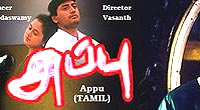
Badalte Rishte Full HD Movie Download
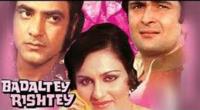
Qaid Mein Hai Bulbul Full HD Movie Download
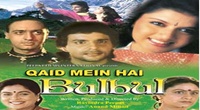
Trinetra Full HD Movie Download
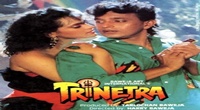
Qaid Full HD Movie Download
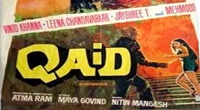
Shob Charitro Kalponik Full HD Movie Download

Hotel (1981) Full HD Movie Download
.jpg)
Hum To Chale Pardes Full HD Movie Download
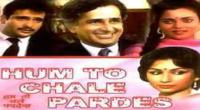
The Killing Jar Full HD Movie Download

Tallidandrulu Full HD Movie Download
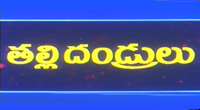
Jaathi Malli Full HD Movie Download
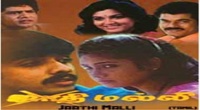
Houn Jau De Full HD Movie Download
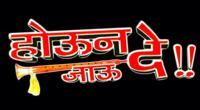
The Blind Side Full HD Movie Download

The Notebook Full HD Movie Download

Sachhai Ki Taaqat (2005) Full HD Movie Download
.jpg)
Dhanush Full HD Movie Download
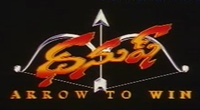
Samurai Full HD Movie Download

Chitti Chellelu Full HD Movie Download
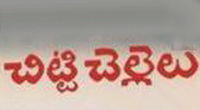
Evarunenu Full HD Movie Download

Kamalamma Kamatham Full HD Movie Download
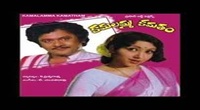
Anuraag Full HD Movie Download

Download latest Movie from bollywood
- 1> baaghi 3
- 2> THE SKY IS PINK MOVIE FULL STORY AND REVIEW
- 3> Luka Chuppi
- 4> TO ALL THE BOYS I’VE LOVED BEFORE
- 5> Kabir Singh
- 6> Street Dancer 3D
- 7> Simmba
- 8> Gone Girl
- 9> The Girl Who Lived
- 10> Ludo
- 11> DILWALE DULHANIA LE JAYENGE
- 12> GUILTY
- 13> The Godfather
- 14> Adventures of Rusty
- 15> Sooryavanshi
- 16> Satyameva Jayate 2
- 17> Thappad
- 18> Bhool Bhulaiyaa 2
- 19> KGFChapter 2
- 20> Mardaani 2
- 21> Pinjar
- 22> Shivaji maharaj
- 23> Ek Villian 2
- 24> Hungama 2
- 25> Divergent
- 26> Mumbai Saga
- 27> The Internship
- 28> HIT (telugu)
- 29> Panga
- 30> The perfect date
- 31> 16 December
- 32> Gopala Gopala (Telugu)
- 33> Brahmastra
- 34> Gangubai Kathiawadi
- 35> Manmadhudu
- 36> Nenu local
- 37> Mahanati
- 38> Shatamanam bavathi
- 39> Lagaan
- 40> After
- 41> MOM
- 42> Shamshera
- 43> Raguvaran BTech
- 44> Khakee
- 45> The villain
- 46> OM
- 47> Mr. perfect
- 48> Bueatifull mind
- 49> Hichki
- 50> Gabbar Singh
- 51> Jogi
- 52> Before Sunrise
- 53> Before Sunset
- 54> Before Midnight
- 55> The Big Bull
- 56> Top Gun: Maverick
- 57> The Purge
- 58> The Sky is Pink
- 59> Laxmmi Bomb
- 60> Sadak 2
- 61> Sufna
- 62> Prithviraj
- 63> PK
- 64> Coolie No 1(2020)
- 65> Black Widow
- 66> Dear Zindagi
- 67> Dil Bechara
- 68> PHIR HERA PHERI
- 69> WAR
- 70> Dostana
- 71> RRR: Roudram Ranam Rudhiram
- 72> Maidan
- 73> Dabbang 3
- 74> Chhalaang
- 75> life as we know it
- 76> SherShaah
- 77> Sandeep Aur Pinky Faraar
- 78> Event Horizon
- 79> 83
- 80> Radhe: Your Most Wanted Bhai
- 81> Gunjan Saxena: The Kargil Girl
- 82> Mr India
- 83> Vivah
- 84> Anokha Bandhan
- 85> Ghost
- 86> Bhoot: Part One - The Haunted Ship
- 87> Haseen Dilruba
- 88> Laal Singh Chaddha
- 89> Qismat
- 90> Rajput
- 91> Drive
- 92> Dil Chahta Hai
- 93> Dil Ki Baazi
- 94> Dil Ka Rishta
- 95> Teesri Manzil
- 96> Dil
- 97> Love Aaj Kal
- 98> Khaali Peeli
- 99> Bunty Aur Babli 2
- 100> Atrangi Re
- 101> Gulabo Sitabo
- 102> Jodi
- 103> Suraj Pe Mangal Bhari
- 104> Deewana
- 105> Attack
- 106> Sardar Udham Singh
- 107> Toofan
- 108> THE LOVEBIRDS
- 109> Jersey
- 110> Ginny Weds Sunny
- 111> Thalaivi
- 112> Shiddat
- 113> Angels vs Zombies
- 114> Koi Mil Gya
- 115> Thank God
- 116> Bhuj: The Pride of India
- 117> Hum Aapke Hain Kaun
- 118> The Platform
- 119> Bird Box
- 120> Roohi Afzana
- 121> Torbaaz
- 122> Nikamma
- 123> World War Z
- 124> Extraction
- 125> Train to Busan
- 126> Life of Pi
- 127> SHAADI MEIN JROOR AANA
- 128> Himmat Aur Mehnat
- 129> To All The Boys: P.S. I Still Love You
- 130> Mimi
- 131> Good Newwz
- 132> Shubh Mangal Zyada Saavdhan
- 133> Raabta
- 134> Harry Potter and the Philosopher's Stone
- 135> Harry Potter and the Chamber of Secrets
- 136> Chhapaak
- 137> War of the Worlds
- 138> Harry Potter and the Prisoner of Azkaban
- 139> Harry Potter and the Goblet of Fire
- 140> MURDER MYSTERY
- 141> Shakuntala Devi
- 142> Bachchan Pandey
- 143> Jayeshbhai Jordar
- 144> Sheer Qorma
- 145> Saina
- 146> 'O' Pushpa I hate tears
- 147> Kedarnath
- 148> MS Dhoni The Untold Story
- 149> Chhichhore
- 150> Badhaai Ho
- 151> Unstoppable
- 152> Oz the Great And Powerful
- 153> The Girl on the Train
- 154> Haathi Mere Saathi 2020
- 155> The Conjuring: The Devil Made Me Do It
- 156> Gandhi Se Pehle Gandhi
- 157> The Song of Scorpions
- 158> Srimanthudu
- 159> Hello Guru Prema Kosame
- 160> Beauty and The Beast
- 161> Black Panther
- 162> Charlie and the Chocolate Factory
- 163> Bole Chudiyan
- 164> Fidaa
- 165> Duvvada Jagannadham
- 166> Bruce Lee: The Fighter
- 167> Hyper
- 168> Yaara
- 169> Red (2020)
- 170> Shivam
- 171> That Is Mahalakshmi
- 172> Nishabdham
- 173> Aashram 2020 web series
- 174> Laxmii
- 175> Mismatched
- 176> STUDENT OF THE YEAR 2
- 177> NAIL POLISH
- 178> Ramprasad Ki Tehrvi
- 179> KAAGAZ
- 180> 12 o Clock
- 181> The Power
- 182> bolo hau
- 183> Tribhanga
- 184> JAMUN
- 185> Madam Chief Minister
- 186> Maasaab
- 187> Aadhaar
- 188> Tanhaji
- 189> Bhaagi 3
- 190> Bhootnath
- 191> MALANG
- 192> Jai Mummy Di
- 193> Haathi Mere Saathi 2021
- 194> Shakeela
- 195> Unpaused
- 196> Annayya
- 197> Vamsoddharakudu
- 198> Mrugaraju
- 199> Narasimha Naidu
- 200> Sankranti
- 201> Manasu Maata Vinadhu
- 202> Anjaane
- 203> Apaharan
- 204> Bachke Rehna Re Baba
- 205> Bewafaa
- 206> Roohi
- 207> Radhe
- 208> Zindagi Khoobsoorat Hai
- 209> Yeh Mohabbat Hai
- 210> Yeh Kya Ho Raha Hai?
- 211> The Tomorrow War
- 212> DehradunDiary
- 213> Meri Shaadi Karaoo
- 214> Matruu Ki Bijlee Ka Mandola
- 215> No One Killed Jesica
- 216> Aag Ka Goola
- 217> Eight Million Dollars
- 218> Three Hundred
- 219> Cats and Dog
- 220> Decoy
- 221> Gold Rush
- 222> You Have Got Mail
- 223> Final Destination three
- 224> Tofan
- 225> Jungle
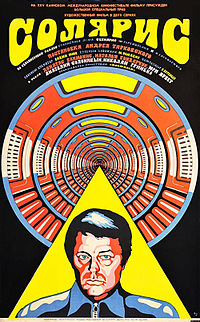 Story of movie Solaris 1972 Film :
Story of movie Solaris 1972 Film : 